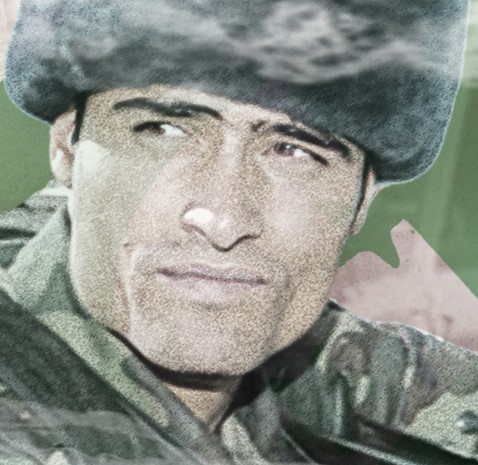The Armed Forces of Central Asia: Tajikistan
Read Full Chapter | View Project Page | Watch Webinar
The following is a single chapter of a wider report examining the armed forces of Central Asia, with each chapter examining one of the five Central Asian republics. For access to the full interactive maps or the accompanying miniseries, links and information are available in the appendix of this chapter.
Overview
Tajikistan’s strategic position is among the most complex in Central Asia, with its politics, security, and terrain dominated by the towering Pamir and Alay Mountains. These mountains, and the country’s complicated history, create significant economic and security divides across each of the different regions of the country.
Currently, Tajikistan ranks fifth among its Central Asian counterparts in several key military metrics, operating with the region’s smallest defence budget and possessing the fewest modern vehicles among the five states. Despite these limitations though, Tajikistan benefits from several key strategic advantages. It hosts Russia’s largest military base outside of the Russian Federation, boasts some of the most defensible terrain in the region, and receives substantial financial and military support from China, the European Union, India, Iran, and the United States, with this external assistance primarily aimed at bolstering Tajikistan’s border security and counter-terrorism capabilities.
Consistent with its comparatively low military spending, Tajikistan also records the lowest gross domestic product (GDP) and GDP per capita among the five Central Asian states. For decades, the Tajik economy has been heavily dependent on a relatively limited range of industries, including textiles, agricultural products, and mining. However, the most significant economic factor influencing Dushanbe’s defence policy and the broader economy is, without a doubt, the inflow of remittances from Tajik workers abroad.
According to the World Bank, remittances now constitute an astounding 51 per cent of Tajikistan’s total earnings, with the majority of these originating from Russia. Understandably, this heavy economic reliance on Moscow places Tajikistan in a precarious strategic position; any changes to Russia’s visa or banking policies could potentially disrupt over half of Tajikistan’s gross earnings. This continuing dependency on remittances not only binds the Tajik economy to the fluctuations of the Russian ruble but also significantly restricts the financial resources available for any potential military modernisation. To further complicate matters, unlike most of the other republics, Tajikistan did not inherit any substantial network of Soviet infrastructure, and the capital, Dushanbe, was notably underdeveloped compared to some of the other republics’ capitals.
Tajikistan’s geographic makeup also complicates its defence and infrastructural challenges, with 90 per cent of the country’s territory covered by highly imposing mountain ranges. These ranges form natural barriers that not only divide the country into four distinct quadrants but also present significant logistical challenges for any transport or logistics operating within the country. While some of these geographic challenges have been addressed through projects such as the Anzob Tunnel, during the Soviet era, Moscow had somewhat neglected to invest in the Tajik SSR, instead directing the majority of its investments towards cities like Tashkent in present-day Uzbekistan and Alma-Ata (now Almaty) in present-day Kazakhstan. The limited funding that Tajikistan did receive from the central planners in Moscow was also primarily directed into the northern Sughd region, rather than into the southern or eastern parts of the country. This uneven allocation of resources between the populations on either side of the Gissar (Hisor) and Zarafshon Ranges has created a complex and challenging foundation for Tajikistan’s development in the post-Soviet era.
Just a year after gaining independence, Tajikistan collapsed into the Tajik Civil War, an all-encompassing conflict that persisted from 1992 until 1997. This devastating war claimed over 100,000 lives and dismantled the majority of the longstanding political power structures that had operated within the country for decades, shifting control away from northern clans towards those in the south. This period of intense conflict would also further strain Tajikistan’s capacity for post-Soviet recovery and development, leaving a lasting burden on the country’s political and economic landscape. Even today, there are areas of Tajikistan that have still not been restored to their pre-war state.
Additionally, Tajikistan also faces significant security challenges along each of its external borders. To the west is Uzbekistan, a nation with a considerably larger and more advanced military, much of which is stationed in close proximity to Tajikistan’s major urban centres. To the north, Tajikistan shares a tense and volatile border with Kyrgyzstan, where relations have worsened in the wake of recent armed conflicts over disputed territories. To the east, Tajikistan borders China’s trans-Pamir region in Xinjiang, a geographically isolated area with only a single border crossing. To the south lies Afghanistan, which remains a persistent security concern for Tajikistan and its strategic partners, with the southern border continually affected by transnational threats such as insurgencies, narcotics trafficking, and extremist movements.
Each of these geographical and infrastructural challenges compels Dushanbe to navigate a series of delicate balancing acts with some of the world’s most influential powers, with Tajikistan now even holding the unique position as the only country in the world hosting military facilities from Russia, China, and India, alongside US and EU-supported border security programmes. Balancing all of these diverse and sometimes competing interests, while managing the growing demands of domestic stakeholders, necessitates careful and strategic diplomatic manoeuvring by policymakers in Dushanbe.
About the authors:
Michael Hilliard is the Director of Defence & Security Analysis for the Oxus Society for Central Asian Affairs.
Michael S. Coffey is an Assistant Professor of History and Political Science at the College of Southern Maryland.
Mitchell Polman is an Independent Researcher and Political Analyst specializing in post-Soviet national politics.
Juan Carlos Pastor Gómez is an Assistant Professor of International Relations at the Complutense University of Madrid.

